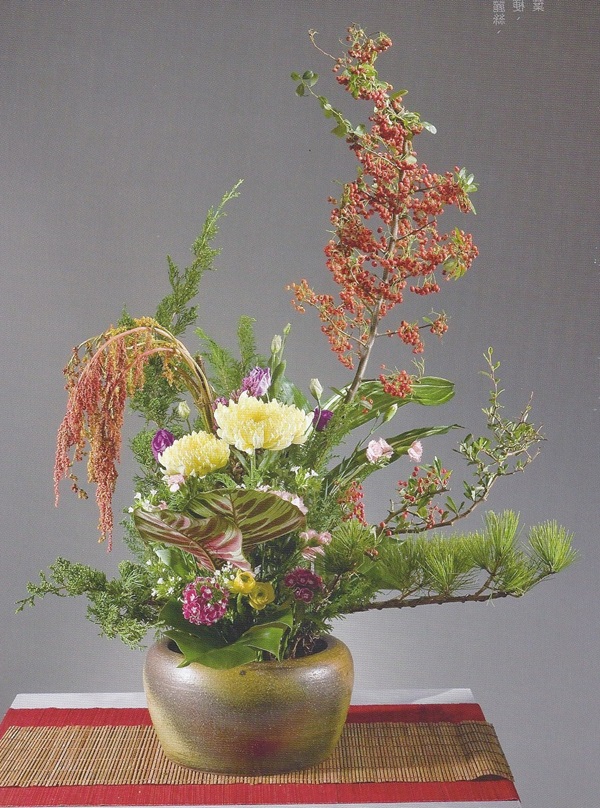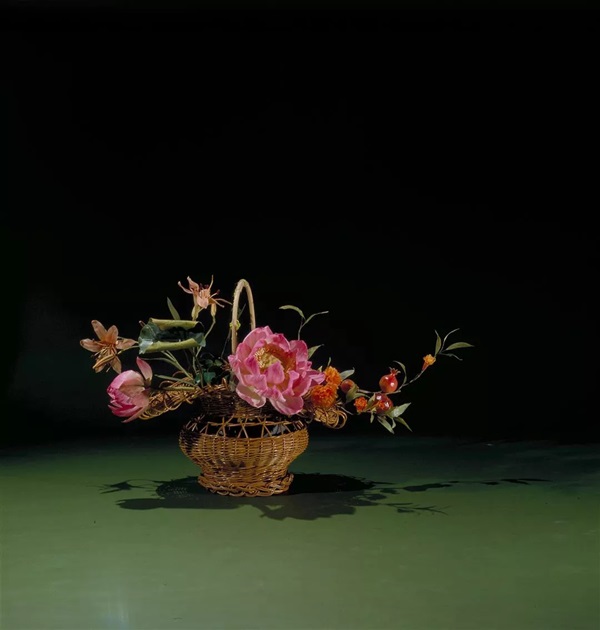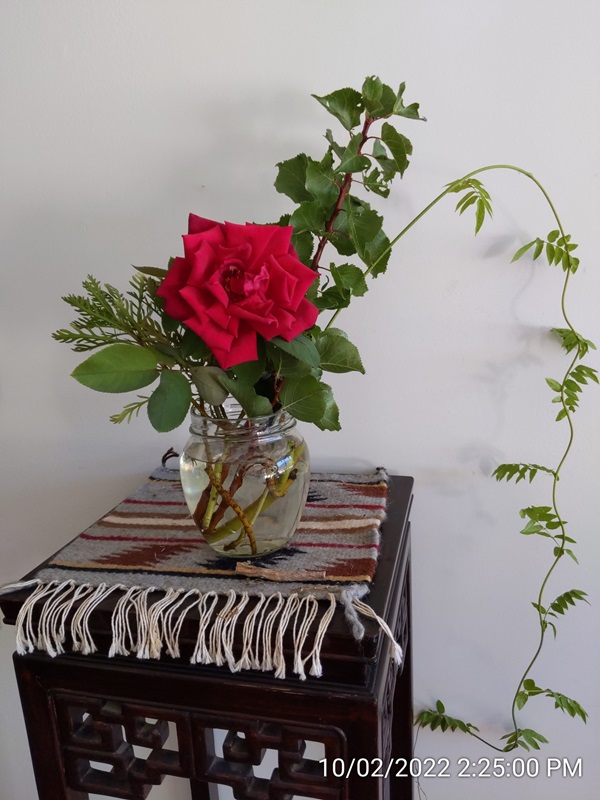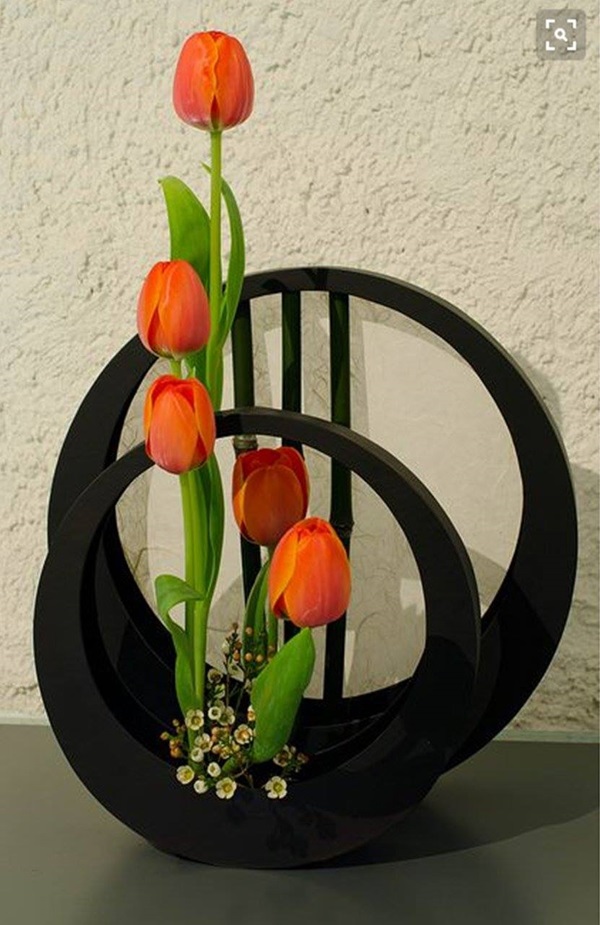Written by: Haroon Shuaib
Posted on: May 23, 2025 |  | 中文
| 中文
A Chinese women arranging flowers in order.
In Chinese, "floral arrangement art" is referred to as 花卉艺术 (Huā Huì Yìshù). The word "花" (Huā) means flower, "卉" (Huì) refers to all kinds of plants and flowers, and "艺术" (Yìshù) means art. Flowers have remained an integral thread that runs through the spectrum of Chinese art: from painting to calligraphy to paper cutting. According to Sun Ke, co-author of “A Brief History of Chinese Flower Arrangement”, the Chinese are “essentially the people of flowers”. The Chinese tradition of floral arrangement art has a history of over 3,000 years and with its unique styles, it is where the earliest origin and representation of oriental flower arranging genre can be found. In fact, so primordial is the Chinese floral arrangement art that although in the modern flower arrangement universe, Japanese Ikebana or Kadō (Way of Flowers) remain the most well-known disciplines, even they trace their roots back to China and its Buddhist, Taoist and literati influences. As Chinese navigators increased contacts between the two countries, that calligraphy and flower arranging were first introduced to Japan. Unlike the particular placement of flowers which emphasizes structure and form in Japanese flower arranging and has developed into a more codified style, the Chinese floral arrangement art remained an expression of mood and feeling which does not adhere to a standard form. Today, while Chinese floral arrangements may lack the decorative beauty of their Japanese counterparts, they possess a creativity seldom seen in the Japanese pieces. The love for flowers perhaps arrived in China with Buddhism as fresh lotus and other flowers and plants were offered as tributes to the Buddha. The earliest depiction of Chinese floral art can be found on the Eastern Han dynasty (25 – 220) mural excavated in a tomb in Hebei province, depicting six red flowers in a ceramic bowl of water. Many ancient Chinese paintings also depict flowers carefully set in porcelain vessels.

Chinese floral art emphasizes harmony with nature, balance, appreciation of natural beauty, and contemplation on the life cycle of plants.
It was during the prosperous Tang (618-907) and Song (960-1279) periods that the floral arrangement art reached its zenith in China. The Tang palace often held peony flower arranging pageants. Noblewomen and scholars arranged flowers as a refined hobby. By the Song Dynasty, utilization of arranged flowers had become very popular among ordinary people. According to a historical record, during the Song dynastic era, one magistrate consumed some ten million flowers for a single flower arrangements exhibition. Festivals like the Peony Festival celebrated specific blooms. Tea ceremonies incorporated floral decorations to enhance the atmosphere. Appreciating and arranging flowers was also a favorite activity for ancient literati: Under Confucian views, even flowers had hierarchy and not all were suitable for flower arrangements and floriography reached an unprecedented level of finery.

Chinese arrangements prioritize the linear quality, natural shape, and rhythm of branches and stems.
Traditional Chinese floral arrangement art achieves its characteristic balance through four essential structural approaches: the upright, tilt, horizontal and drooping forms. Guiding this practice are three core philosophies: closely following nature's lead, learning from its inherent designs, and thoughtfully presenting its beauty in an elevated way. The mastery of these techniques seeks to erase any obvious human touch, lending the artwork a profoundly natural feel. Today Chinese floral arts can be classified into four prevalent styles: Intellectual, Realistic, Expressionist and Formative Arrangements. The choice of plant material is also crucial; involving an appreciation for its physical form, an exploration of its deeper meaning, and an understanding of its symbolic connotations. Floral artists aim not merely to display a flower's aesthetic charm but to channel its associated humanistic spirit, as seen with the lotus, whose arrangement should convey both its graceful beauty and its symbolic nobility.
While yellow peonies are regarded as the king of flowers in Chinese floristry, pink peonies were the queen, with both symbolizing wealth and illustriousness. From high to low, ancient literati ranked flowers from orchids to plum flowers, jasmine, lotus, chrysanthemum, hibiscus, lilies, peach blossoms, begonia, rose, azalea and morning glory. Each flower had its own symbolism. Some blooms represent seasons or months. For example, the four seasons are represented by flowering Cherry (winter), Orchid and Irises (spring), Bamboo (summer) and Chrysanthemum (fall). Magnolias were so precious that only emperors were allowed to own them. They have also been used in Chinese medicine, and form a recurring theme in poetry. In modern times, magnolias represent beauty. Lotus is a flower that remains steeped in Buddhist symbolism and considered one of the eight precious things in faith. It symbolizes purity and is known as the gentleman's flower because it grows out from the mud, pure and unstained. The colors of flowers too have their distinct symbolism and the hue of a blossom gives it a special meaning in Chinese culture. If one decides to give flowers to a friend or colleague, it is imperative to be aware of the symbolism associated with different colors and species of flowers. Pink and red are colors of celebration, good luck and happiness, while white is the color of death and ghosts. Chrysanthemums are never preferred as gifts as they are used to commemorate deceased family members, especially on Tomb Sweeping Day. On China's unofficial Valentine's Day, celebrated on May 20, roses, particularly red and pink ones, are favored for their association with love and romance. Also, flowers like lilies and tulips are a good choice for expressing love and admiration but white lilies and tulips are to be avoided as white in flowers in the color of mourning.

Chinese floral art gained significant popularity and development during the Tang and Song dynasties.
Of course, with the level of sophistication that evolved over centuries for the pottery, half of the artistic presentation of a Chinese flower arrangement work relies on the vessel. The pottery lends itself beautifully to how an arrangement of flowers sits in the vessel. Innovative use of other plant elements besides flowers such as branches, leaves, trunks and dead wood often also find their way in the arrangements. China has a vast land, diverse terrains and different climates in its many regions, which helps make all kinds of trees, shrubs, vines and grass a veritable treasure trove for flower arrangement. According to Liang Qinzhang, a traditional Chinese floral arrangement artist, beauty of Chinese flower arrangement lies in its naturalness, as opposed to artificial creation. He emphasizes the importance of observing plants in their natural environment and understanding their ecological habits to create better arrangements. Liang believes that traditional Chinese flower arrangement differs from its Western counterpart as it places more emphasis on expressing personalized meaning incorporating elements of balance, minimalism and asymmetry, unlike Western arrangements which tend towards symmetry.

Compositions in Chinese floral art often aim to evoke a particular season, mood, or natural landscape in miniature.
Today’s florists in China mix old ways with new. Some even add LED lights for drama or use recycled containers for sustainability. Urban dwellers might create mini arrangements for apartments, while rural artists weave in wild grasses. Thankfully in recent times, this traditional art has found a new level of appreciation and in 2008, approved by the State Council, traditional flower arrangement was included in the National Intangible Cultural Heritage list of China, protected and supported by the government. The Museum of Traditional Chinese Flower Arrangement, showcasing the history and art of traditional Chinese flower arrangement opened its doors to the public in 2015 in Beijing as a free-access public welfare project. Beyond the exhibitions, the museum offers courses, lectures and specialized displays about flowers and flower arranging, along with a flower salon to engage the public.
You may also like: